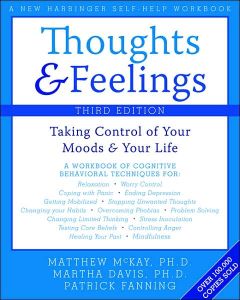Join getAbstract to access the summary!

Join getAbstract to access the summary!
Matthew McKay, Martha Davis and Patrick Fanning
Thoughts & Feelings
Taking Control of Your Moods & Your Life
New Harbinger, 2007
What's inside?
Your thoughts are not crazy pinballs banging madly around inside your head. You can control them – and your emotions.
Recommendation
Making the effort to change their thoughts and emotions is not an easy road for most people – but access to the right tools, techniques and resources can help. Matthew McKay, Martha Davis and Patrick Fanning offer a thorough handbook on using cognitive behavioral therapy (CBT) to deal with such serious emotional problems as panic disorder, phobias, obsessive thinking, depression and more. This workbook is a comprehensive guide to CBT (including worksheets), covering what it is, how it works and how people can use it to restructure their thinking. getAbstract salutes the authors for this valuable manual, and recommends it to people who are wrestling with these issues personally or who want a reference so they can help others who need to regain control over runaway emotions.
Summary
About the Authors
Matthew McKay, Ph.D., is the author of numerous psychology books. He is a professor at a clinical -psychology graduate school in Berkeley, California. Martha Davis, Ph.D., a psychologist, and Patrick Fanning, a writer, are also co-authors of other self-help books.


















Comment on this summary